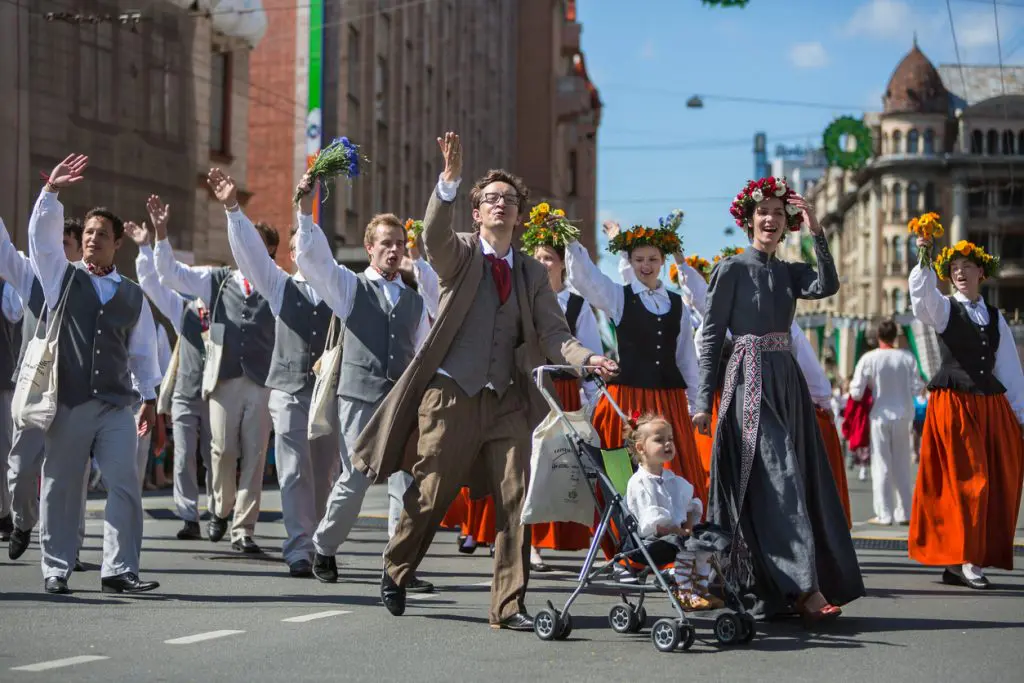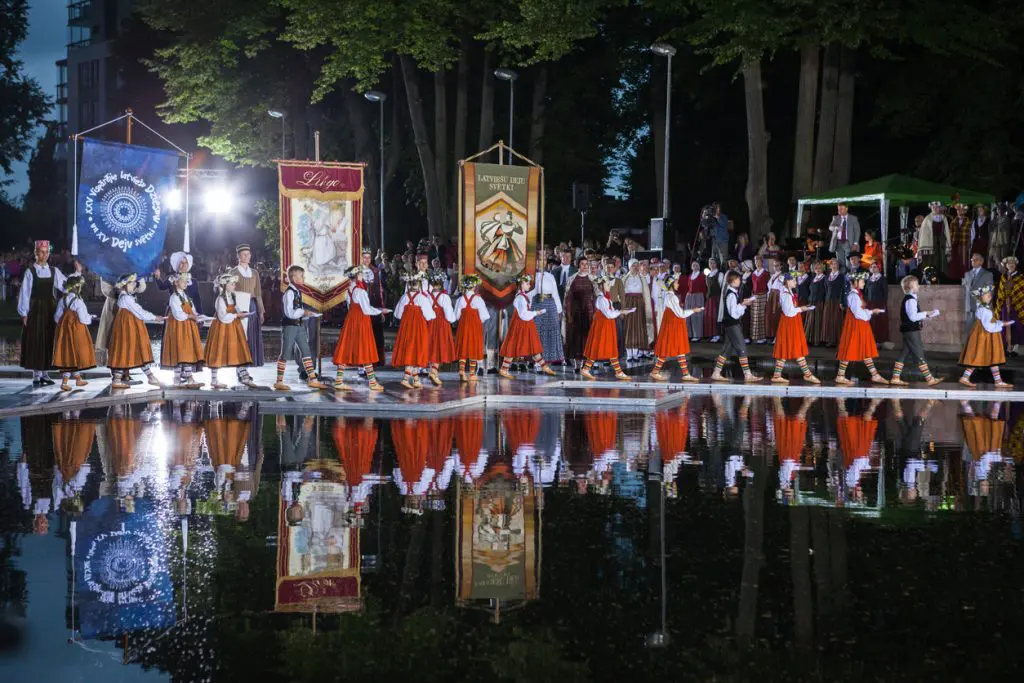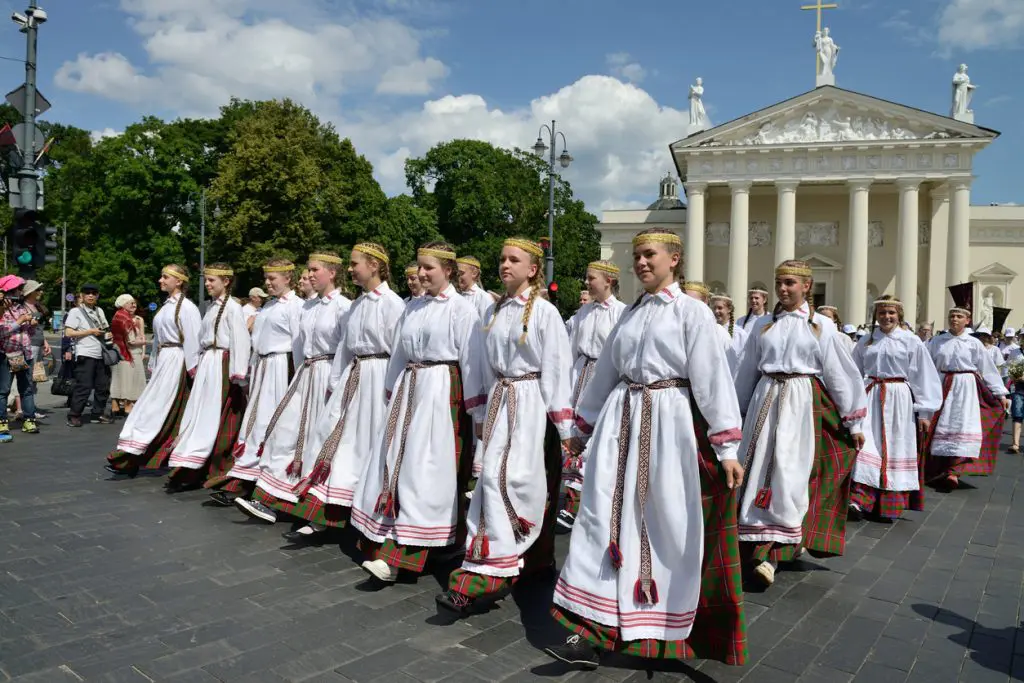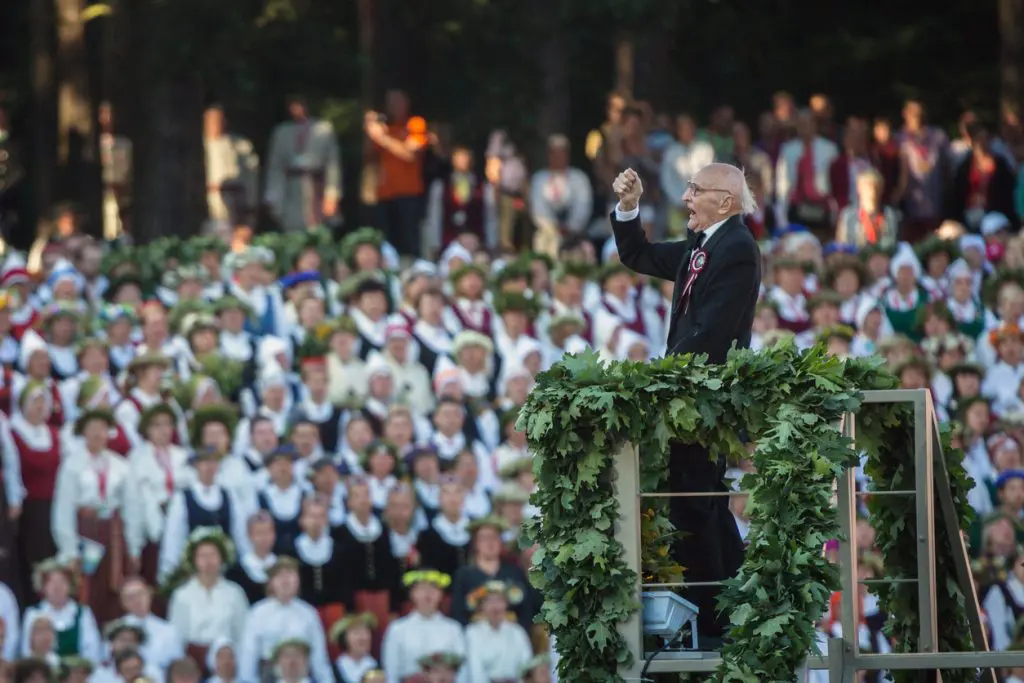
The largest events held in the Baltic States are the UNESCO-listed song and dance festivals held in mid-summer every five years. These mass performances were at the center of the Baltic national awakenings, and remain pivotal events. With hundreds of choirs and dance groups performing over the course of four days to a week, these are the central events of the Baltic cultural calendars. As patriotic events that drew people from across the country and its classes, the song and dance celebrations became the center of resistance to the Soviet Union. While forced to sing communist songs, participants in the 80s also sang forbidden patriotic tunes, heralding what came to be known as the Singing Revolution, a series of independence movements that helped lead to the breakup of the Soviet Union. These festivals harken back to an earlier time in history. Performers wear linen folk clothing, and there is a strong emphasis on nature, with singers often weaving symbolic flowers and wreaths into their hair. These events are not nationalistic, and choirs come from all over Europe, and the US, to take part.
The next festivals are Estonia, July 3-6 2025, then Latvia in summer 2028 and Lithuania in summer 2029. While most people attending the celebrations are locals, who stay with friends and family, it’s still best to book hotel rooms well in advance. All three festivals are held in areas outside the city centers, but have frequent buses and streetcars to the old town districts where we provide accommodations. Seats should be booked well in advance, although the song festivals have large grassy areas without seating that often still have affordable tickets available several weeks beforehand.

Estonia
Choral music is the epitome of Estonian and Latvian culture, what woodcarving is to Lithuanians or stone carving in Armenia. Estonia may be the world’s least religious country, but it feels like everyone there is in a church choir. Running into members of a choir singing as they walk down a street or drink down a bar is a common occurrence. Traveling around, you might notice that every town, and most villages, has a choral bandshell. The Estonian Song Festival in Tallinn is one of the world’s largest choral events, with over 30,000 singers performing before an audience of at least 80,000. A dance festival is held concurrently, with 10,000 dancers in folk dress performing traditional dances.
Although singing performances are held on both Saturday and Sunday, the first is the main event. This performance is preceded by a six-hour parade, as the festival’s dancers and singers (including choirs from around the world) make their way from Tallinn’s center to the song festival grounds on the opposite side of the bay. Estonia often feels like the world’s largest small town. This is especially true as the marchers are greeted by friends and family, who often run up to deliver hugs and flowers. Every performer wears the distinct folk costume of their village and town, and when members of the crowd salute the hometowns of the people marching by, the performers cheer in return. As the procession makes its way to the festival grounds, dancers perform parts of their routines, and choirs sing anything from ancient songs, to “If You’re Happy and You Know It” in Estonian.
At the festival grounds itself, emotions run high, with the crowd performing “The Wave,” chanting Estonia’s name, and cheering when an especially popular song begins. You may even see some audience members and singers crying during especially dramatic portions. The songs chosen vary from year to year, but generally have natural motifs and stress humility. Although the festival is held near Midsummer, when the nights are brief, the concert continues past dusk.

Latvia
Not to be outdone by their northern neighbors, the Latvians have their own mammoth song and dance festival. Held in Mezaparks, the “Forest Park” district of Riga, the festival grounds are in one of the city’s most popular areas, home to an amusement park, zoo, and Art Nouveau villas built for the city’s elites. The festival opens with a traditional sacred music concert held in Riga’s cathedral. A parade of participants in folk costume follows this. The parade lasts for several hours and ends at the Freedom Monument. As with the other song and dance festivals, there are several days of performances, with the main event being a massive concert towards the end. During the festival, there are many stages set up in Riga’s center to livestream performances.

Lithuania
Lithuania organizes its song and dance festival a little differently from its Baltic neighbors. Lithuania’s festival is held every five years, and divided up between its two historic capitals, Kaunas and Vilnius. While Kaunas hosted the first song festivals, and remains home to the opening events, Vilnius hosts the grand finale. Lithuania’s program is diverse, mixing song and dancing with folk art exhibitions, crafts for and by children, traditional folklore and theater, and even a wind instrument orchestra. The final event is heralded by a traditional process held in honor of Lithuania’s founder, King Mindaugas. The medieval pageantry includes guilds, priests, and nobility arranged according to their historic status. This human river flows from the Cathedral, where it is blessed, to the festival grounds, where 12,000 sing before a vast crowd.

Summer is the best time to visit the Baltic States, as the days are warm and mild, and even smaller cities are buzzing with busy cultural calendars. If you are fortunate enough to have the chance to visit Estonia, Latvia, or Lithuania during their rare song and dance festivals (or even the youth versions, which are also held ever 4-5 years), be sure to make the most of the opportunity. With their combination of ancient traditions and sheer modern joy, these festivals are the highlights of any trip.

Born and raised in Wisconsin, Kevin lived in Estonia and Finland for several years, traveling widely through Central and Eastern Europe, before settling down in Berlin. Having studied the cultures, histories, and economics of the countries along the Baltic Sea for his Master’s degree, Kevin has the knowledge and experience to help you plan the perfect trip anywhere in the region, and also works as JayWay’s main writer and editor.